
Caracol Televisión is a Colombian free-to-air television network, owned by the Grupo Valorem. It is one of the leading private networks in Colombia, alongside Canal RCN and Canal 1. The network distributes and produces 5,000+ programs and has aired in 587 countries, more than any other television company in Latin America.

RCN Televisión is a Colombian free-to-air television network. is a Colombian open television channel, belonging to the Ardila Lülle Organization. It was founded as a television content production company on March 23, 1967 and found its broadcasts as an independent channel on July 10, 1998.Its main shareholder is Carlos Ardila Lülle. It produced Yo soy Betty, la fea, one of the most successful Colombian soap operas.
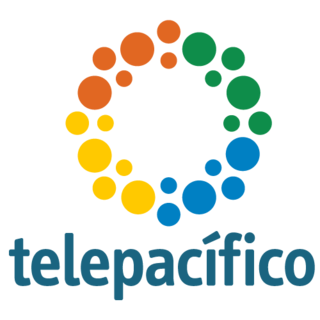
Telepacífico is a Colombian regional public television network, created in 1986 as the city of Cali celebrated its 450th anniversary. It started broadcasting on July 3, 1988, with 24 weekly programming hours. It was the third regional network in the country, after Teleantioquia, created in 1985, and Telecaribe, created in 1986.

Telecaribe is a regional television network for the Caribbean region of Colombia.
José Yamid Amat Ruiz is a Colombian journalist.
Todelar is a system of radio stations that covers all of Colombia, founded in 1953 by Bernardo Tobón de la Roche. Its flagship station is La Voz de Bogotá since 2017. Radio Continental, also in Bogotá, had this role until 2016, having joined Todelar in 1957.
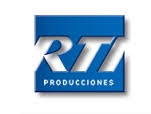
R.T.I. Colombia, also known as Radio Televisión Interamericana, is a Colombian television production company and former programadora. It aired 14.5 hours per week of programming in 1993. In the 1990s, as a programadora, it was a member of OTI Colombia, a coalition that included Producciones PUNCH, Producciones JES, RCN Television, Caracol Televisión and Datos y Mensajes.

Television in Colombia or Colombian television is a media of Colombia. It is characterized for broadcasting telenovelas, series, game shows and TV news. Until 1998 it was a state monopoly. There are two privately owned TV networks and three state-owned TV networks with national coverage, as well as six regional TV networks and dozens of local TV stations. There are numerous cable TV companies operating in Colombia under each Colombian department statutes. These cable companies also develop their own channels, in addition to a variety of international channels. Television in Colombia has always relied on technological advancements from developed countries importing almost all the equipment.
Paulo Gustavo Laserna Phillips is a Colombian journalist, political scientist, television presenter and businessman. He served as the CEO for Caracol TV between 2001 and 2011.

Canal Trece Is a Colombian free-to-air television network with regional coverage, specialized in cultural programming. Being a public television station, it is owned by the Colombian Government and its operations are managed by the RTVC Public Media System. The headquarters of the channel are located in Bogotá.
Canal A was a Colombian state-owned privately run national television channel. It was launched March 27, 1972 as Segunda Cadena, since it was the second television channel in Colombia, and replacing Tele 9 Corazón. Until December 31, 1991, it was known as Cadena Dos.
Channel 1 is a Colombian State-owned television channel. It started broadcasting on 13 June 1954 on channel 8 VHF in Bogotá. It is owned by the National Radio Television of Colombia and managed by Plural Comunicaciones, S.A.S, a private company. From the late 1950s to 2017, the channel was administered by private programming companies known as programadoras, which bid for time slots with the Colombian State.

Virginia Vallejo García is a Colombian author, journalist, television director, anchorwoman, media personality, socialite, and political asylee in the United States of America. On 18 July 2006, the DEA took her out of Colombia in a special flight to save her life and cooperate with the Department of Justice in high-profile cases, after she had publicly accused several Colombian presidents and politicians of being beneficiaries and accomplices of the leading cocaine cartels. In 2019, she began working for RT en Español.
In Colombian broadcasting, programadoras are companies that produce television programs, especially for the public-commercial Canal Uno.
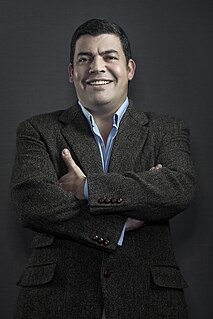
Gustavo Ernesto Gómez Córdoba is a Colombian journalist and writer, whose work has been recognized with awards including Journalist of the Year in 2010. He began working in Cromos magazine in the 1990s and became prominent as a national radio broadcaster starting in 2005, when he joins the team of 6AM Hoy x Hoy from Caracol Radio. He also writes for SoHo Magazine and another significant media.
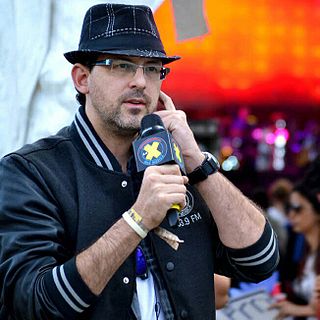
Álvaro Uribe, known as Uribe Dj, is a radio personality, Voice-over artist and television host. Uribe has hosted programs on English and Spanish language radio stations in Colombia like The X 103.9 FM, Movistar Radio, La Mega 90.9 FM and 88.9 FM. In June 2013, he started to host the television show Aldea TIC on Canal Tr3ce.
Media ownership in Colombia is highly concentrated. The four largest newspapers together account for two-thirds of total readership, and the two largest television channels have about two-thirds of the market and 78% of advertising revenues, according to a 2016 study by Reporters Without Borders and the Colombian Federation of Journalists.
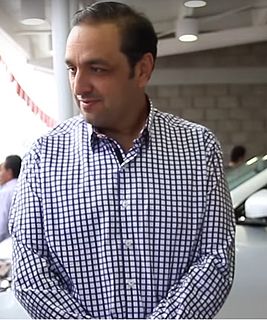
Jorge Alfredo Vargas Angulo is a Colombian journalist and news presenter.
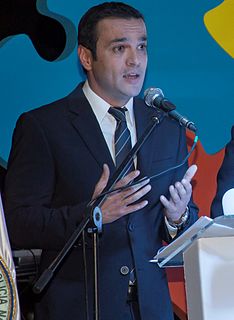
Juan Diego Alvira Cortés is a Colombian journalist, news presenter and lawyer.
Judith Sarmiento Granada is a Colombian lawyer and journalist known nationally for her work in various radio and television media since the 1970s.














